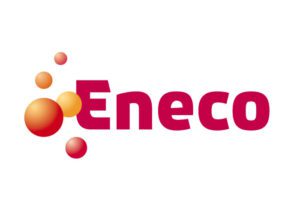Many companies have a fine system of rules and agreements in place to cover safety. However, one important component is often overlooked. Many unsafe situations can be avoided by monitoring employees’ attitude and behaviour and bringing about changes in their behaviour where necessary. The Safety Culture Ladder has helped the Eneco energy company in this respect, says HSSEQ director Ron van Vuuren in a conversation with NEN.
The Safety Culture Ladder (SCL) is a certification scheme in the area of integral health and safety that primarily focuses on attitude and behaviour. By influencing these components in particular, the scheme seeks to increase safety within companies. You can agree on all the rules you want, in the end the attitude and behaviour of the person who has to work with them is the deciding factor. The SCL scheme is based on a number of steps, each of which represents a safety level that a company can achieve. The SCL not only stands for physical safety, but for safety in all areas, i.e. also psychosocial safety and health.
Idea
Eneco's Ron van Vuuren has been working with the SCL for four years. In a brief reflection on the early days, he explains why the choice to work with this particular system was made. 'Eneco works with energy in several areas. We produce energy, but we also trade and sell energy and energy services. This means there are different sides to our company, the more administrative side and the more technical departments. We had been engaged in serious efforts to enable optimum work safety in those different departments for a considerable time, but the SCL was really the missing link that enabled us to increase safety by influencing people's attitude and behaviour, in addition to hard agreements and rules. This was necessary, as employees never intentionally put themselves in a dangerous situation, but in practice have to deal with all kinds of dilemmas and unexpected situations, whereby 'unwritten rules', such as always helping the customer out, play a big role in behaviour. What’s more, no rule can ever fully cover all eventualities. If you can get that under control, you’re well on your way.'
Ownership
Eneco is now on step 4 of the SCL, proactively responding to possible health and safety risks within the own organisation. Van Vuuren initially tried to introduce the SCL concept through a large, centrally led programme instead of organisation-wide, but this did not take hold among the employees. 'There was a kind of lack of ownership, the concept didn’t speak to everyone. The trick turned out to be to take a decentralised approach, connecting with the nature of the department, tuning in to the employees and their work. Explaining the goal meant having to define 'proactive behaviour'. An idea is more likely to take hold when it’s made concrete for someone, something that can be recognised in relation to an individual's given situation.'
Perspective
What has the SCL meant for Eneco? 'Ownership in the departments has grown significantly and the discussion on safety is conducted everywhere in the organisation. An example of the proactive culture is also how Eneco learns from incidents. The key question is not 'what caused an incident', but 'why was it logical to do it like this'. This allows you to put yourself in an employee's shoes and focus on the learning points in the organisation and the system. Research shows that if all aspects of safety have been properly safeguarded, including the psychosocial aspect, a company will simply perform better and be more highly valued by its customers.' According to Van Vuuren, the key is to persevere. 'Getting to this level was one thing, but remaining there is just as much of a challenge. We now use the SCL structure for the HSSEQ year plans instead of our own plan structure. Take that as a big compliment!'
